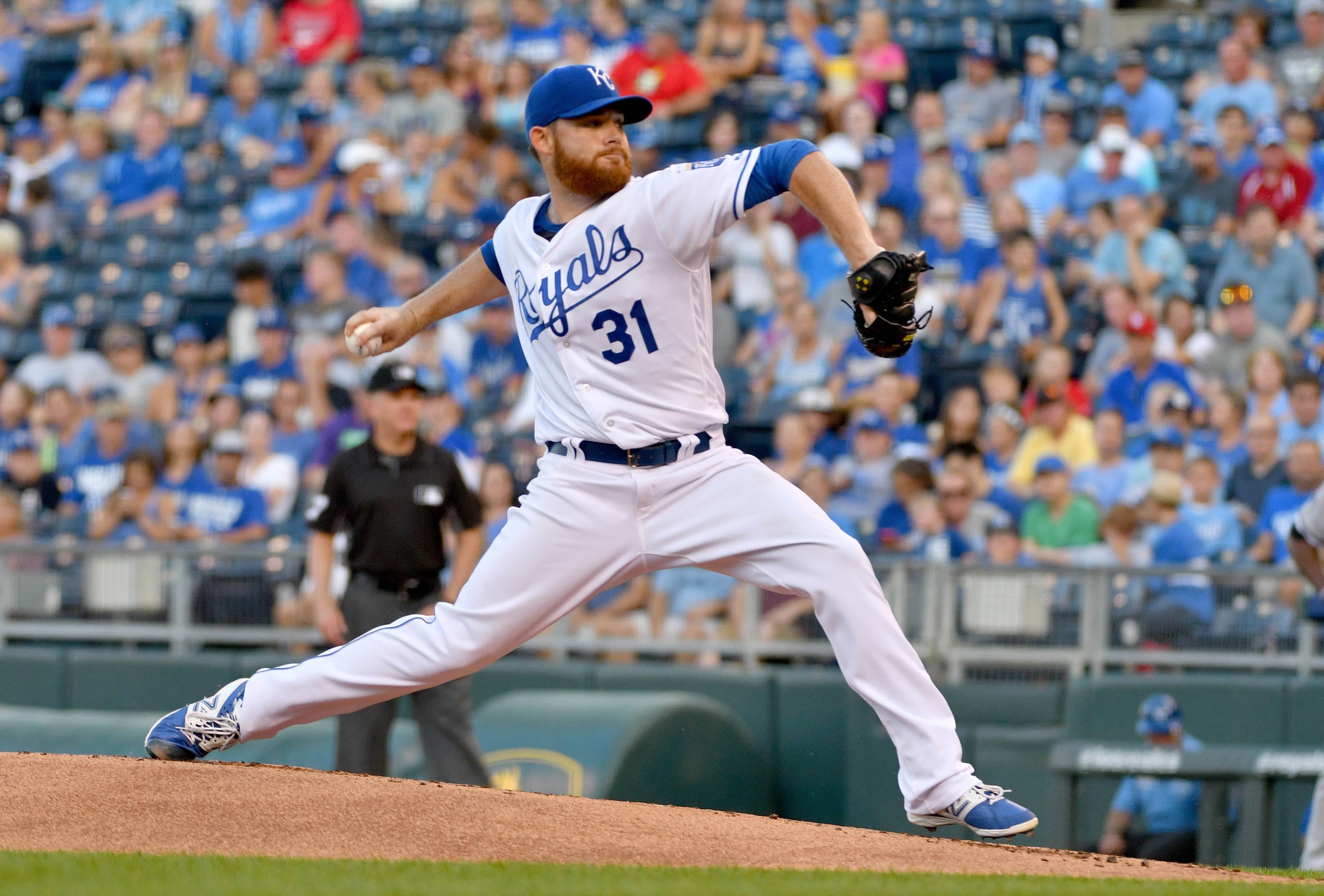For much of the 2016 season, it’s been difficult to watch Royals starting pitchers. They’ve allowed home runs at a ridiculous rate, and overall, they have a 4.80 ERA, which is good enough for 12th in the league. That ranking would look much better if the league had 45 teams, but because there are 15 teams in the league, that ranking is closer to what I’d refer to as “bad.”
Despite the poor overall numbers, things have been quite a bit better for the rotation since the All-Star Break. American League starters had a 4.51 ERA in the first half of the season, because apparently, all American League games were played in Coors Field during the first half. The Royals’ rotation had a 4.99 ERA, ranking 12th in the league. Since the break, they still rank in the lower half, at 9th, but their 4.18 ERA is not far from the league average of 4.07. Obviously you’d prefer to see a smaller number there, but the starters have generally kept the Royals in more games over the last month.
Ian Kennedy has allowed three or fewer runs in four of his six starts in the second half. Yordano Ventura has done so in all five of his starts. Danny Duffy has held opponents to three or fewer runs in four of his five starts. Edinson Volquez and Dillon Gee have not done as well, combining for four such starts in nine tries. But overall, the rotation has been solid enough to win some games. The offense, well, has not.
Getting back to the rotation, we can see the first thing that jumps out is the home run rate. In the first half, Royals starters allowed 1.66 home runs per nine innings, easily the highest rate in the league. In the second half, they’re at 1.39 home runs per nine innings, which is the seventh-highest rate in the league. Again, that’s still not great, but it’s better, and because they’ve allowed fewer hits overall, the dingers they have allowed haven’t done quite as much damage.
Other than Volquez and Gee, the main starters have all allowed a lower slugging percentage since the break as well. Ventura has knocked nearly 40 points off of opponents’ OPS against him, Duffy has lowered it by 80 points, and Kennedy has dropped it by 11 points. Okay, so that last one isn’t that much lower, but it is lower, therefore I’m still correct. So there.
Oddly enough, Royals starters have a lower strikeout rate since the All-Star Break, at 18.9 percent, compared to 21 percent before the break. That could signify a shift in approach, getting back to attacking the zone more often, and while it still may be the case, they haven’t been able to drastically reduce their walk rate. After digging a bit deeper, it looks like the strikeout discrepancy is a bit fluky.
Opposing batters are actually swinging and missing at more pitches in the second half than they were in the first half. Prior to the break, Royals starters induced a swinging strike rate of 9.7 percent, and that’s gone up to 10.3 percent since the break. That’s not a huge increase, but the fact that it’s increased at all is at odds with the significant drop in strikeout rate. I would expect to see that balance out with a few more strikeouts as the season progresses.
It’s been a long, long season for starting pitchers not named Danny Duffy. That could be changing. A couple of guys are still trying to find themselves as the summer has worn on, but the Royals rotation doesn’t appear to be in quite as bad of shape as it once did. Kennedy and Ventura have righted the ship from a rocky first half, while Duffy’s taken his game to yet another level.
And yet, it’s all been for naught, because the offense has scored 13 runs total in the last month. Don’t check my math on that, but I’m pretty sure it’s accurate.
Had Royals batters done just a bit more at the plate, the team likely would be much closer to the Indians, whose rotation has a whopping 5.09 ERA since the break.
Of course, the offense isn’t solely to blame, as the bullpen has had plenty of horrendous nights as well, putting up an unsightly 5.40 ERA of their own.
To recap: in the first half, Royals starters dug their team into too many early holes, while the bullpen did enough to scratch some wins together with an offense that wasn’t doing much. In the second half, the bullpen and offense have given the starters a minuscule margin for error, so any slight increase in production hasn’t had any real effect.
That’s the season for the Royals. They haven’t been able to sustain good performances from multiple parts of the team, and even when there are good performances, the bad performances make any overall impact marginal.
If there’s anything to take away from this trend, it’s that average starting pitching is more enjoyable to watch than terrible starting pitching, and perhaps this could be a sign of better things to come in 2017. But these improvements will simply be too little and too late for this year’s squad.

1 comment on “The Rotation Has Been Better, But It Hasn’t Really Mattered”
Comments are closed.